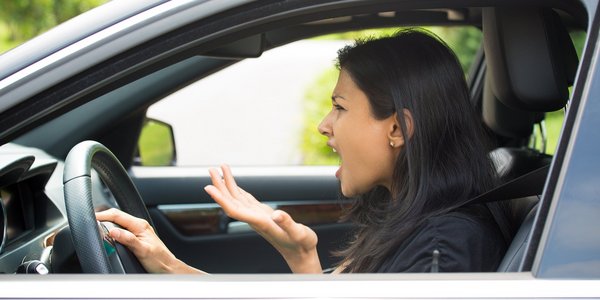
Be Cool! Avoiding stress when driving a car
In road traffic, many road users have to share a relatively limited space. You meet in traffic and have to get along with each other. The anonymity and the seclusion of the vehicle cabin can lead to the fact that even void occasions trigger strong feelings with you, which influence your driving behavior negatively.
Stress is a frequently used keyword nowadays to explain certain behaviors. In road traffic in particular, stress often leads to critical situations and an increase in the number of accidents. For some it is the supposed slow drivers, for others it is the pushy drivers who trigger negative emotions.
Why is stress in road traffic so dangerous?
Anger and stress in traffic can easily lead to a risky driving style. Particularly problematic are emotions that seek revenge. Who feels humiliated and takes a revenge attitude, represents a big risk. In addition, it often happens that you have to get to a certain place very quickly and leave just before you leave. Time pressure means stress and leads to a risky driving style.
Stress also often occurs between the individual car occupants. Lively discussions or arguments while driving can lead to dangerous situations in road traffic.
Notice:
Neither anger nor time pressure are excuses for disregarding traffic regulations. Do not drive faster than allowed, keep sufficient distance and cross traffic lights only when green.
Stress is not the only source of danger!
In addition to negative emotions such as stress and anger, positive emotions can also have a negative effect on your driving behaviour. When joy, happiness, or fun become overwhelming, your attention suffers as well. These feelings, which are quite normal in daily life, can quickly turn into carelessness and imprudence when driving.
Control emotions:
If you want to be considered a "good driver", you have to control your anger and tolerate frustration. Consideration, partnership and composure are also part of this. So you must not only control your vehicle, but also your feelings. Don't get carried away by feelings, learn to deal with emotions.
Step 1: Self-knowledge
Often you are not aware of your attitudes, prejudices, motives or feelings and their influence on traffic behaviour. However, they can only be changed if you know which settings you have at all. A relaxed basic attitude in road traffic would be optimal.
Step 2: Change of perspective
The next step is the ability to put oneself in the shoes of other road users, to question their behaviour logically and try to understand it. Often simple explanations for certain behaviour patterns can be found very quickly.
Step 3: Do not take personally
Knowing that emotions are not good co-drivers, it is better to tolerate each other's misbehaviour and not to evaluate the whole thing as a personal attack, because swings are high emotions, your driving behavior and that of the other is no longer influenced by the rational objectivity that makes driving safer.

